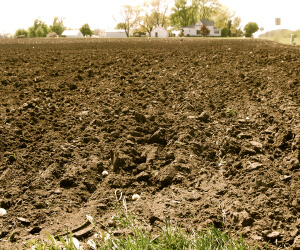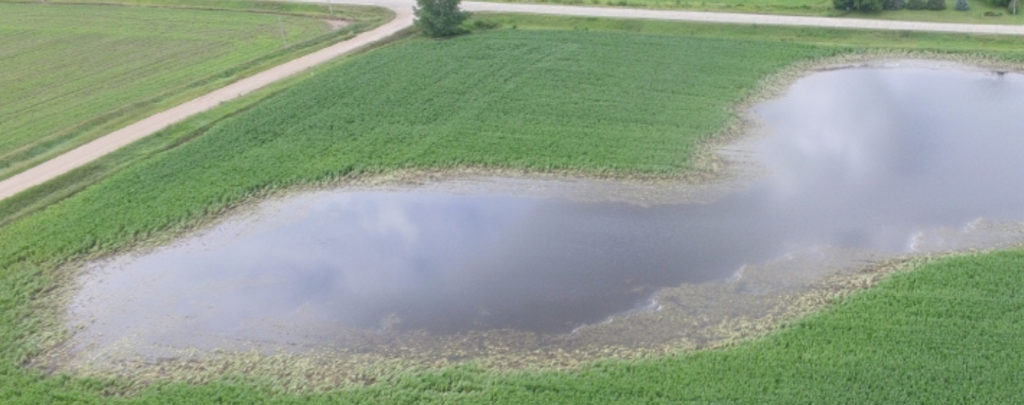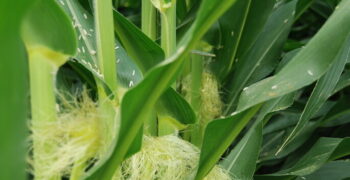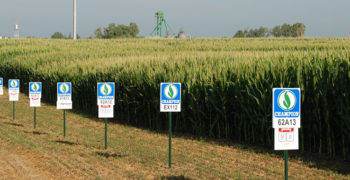Most Midwestern farmers are no strangers to fields that never seem to dry up in the spring and stay damp in the fall, preventing field work. Poor soil drainage is common in the Corn Belt, especially in the “Prairie Pothole” region that spans from Iowa through Minnesota and the Dakotas into Canada.
These conditions can be a blessing in a dry growing season, but a curse when you receive adequate or above-average rainfall. Adequate soil drainage has wide-ranging implications from planting and early crop development to harvest and field management afterwards. Poorly drained soils present a host of different challenges to a crop. A cool, wet spring planting season is challenging enough; add to it soils that drain moisture slowly or don’t drain at all, and it can start limiting crop yield potential from day-one.
How poor soil drainage harms a corn crop
A corn plant’s root system is especially susceptible to yield-limiting damage or slow development early in the growing season. A healthy root system is important in seeking out moisture and nutrients to support the plant and help it withstand strong wind events. Saturated soils do not offer the most ideal growing conditions for root development and can ultimately limit roots’ ability to perform these critical functions later on.
 With adequate moisture and nutrients, roots don’t have to grow down deep searching for nitrogen, potassium and phosphorous, so most growth is fairly shallow in the soil and doesn’t establish a deep, strong foundation for the plant. However, some hybrids can put on a deep root system that anchors them into the ground and can find extra available nutrients deeper in the soil profile. Hybrids that exhibit these characteristics tend to do very well in poorly drained soils.
With adequate moisture and nutrients, roots don’t have to grow down deep searching for nitrogen, potassium and phosphorous, so most growth is fairly shallow in the soil and doesn’t establish a deep, strong foundation for the plant. However, some hybrids can put on a deep root system that anchors them into the ground and can find extra available nutrients deeper in the soil profile. Hybrids that exhibit these characteristics tend to do very well in poorly drained soils.
Poor soil drainage has the potential to limit crop output later in the growing season, too. They hold water for longer after a rain event and also keep more humidity within the crop canopy and bring more dew to the corn leaves later into the mid-day hours. This extra moisture on the leaves and in the canopy brings an increased level of disease pressure such as gray leaf spot, northern corn leaf blight, and common rust. A strong disease package is a must for corn hybrids that are being planted on saturated soil types.
This potential damage can occur in multiple years, too. Fungal pathogens can overwinter in the soil residue and infect growing stalks. This additional disease pressure increases the need for a strong disease package as well a superior stalk health.
Maximizing corn yield in poorly drained soils
Successfully overcoming these challenges requires attention to tillage, nutrient placement and timing, crop rotation and hybrid selection. When choosing hybrids for poorly drained and saturated soils, genetic selection and proven agronomic ratings for these acres set the tone for optimal yield potential on those farms. Work with your Champion Seed District Sales Manager to discuss which hybrids will work best on your soils.
Modern breeding, genetic selection and hybrid development have made dramatic strides in maximizing crop output potential in challenging environments like poor soil drainage.
That makes it important to know the hybrids you select have the genetic background and performance history that make them the right choices for these types of challenging growing conditions. And at Champion Seed, we have the varieties that can thrive in such environments. When selecting hybrids for such conditions, consider ratings for the following:
- Early plant vigor
- Root strength
- Disease tolerance
- Stalk health
Hybrids like 53A19 SS and 56A21 VT2 & SS have a parent in their pedigrees with strong emergence and the confirmed ability to handle saturated soils. This proven inbred trait regularly contributes to strong performance in soils that stay cool and wet, challenging emergence in the spring and root development later on in the growing season.
Other hybrids may not have a confirmed genetic component that works on poorly drained soils but perform well when stress-tested in those environments. These hybrids have shown strong ability to emerge quickly and produce large root systems when tested in saturated soil environments:
Effects of a seed treatment
Along with the right hybrid, adding a strong seed treatment helps mitigate the stresses saturated soils pose a corn plant during the growing season. Early plant vigor ratings are an important factor to determining which products will shoot out of the ground with a perfect stand in these cool wet spring conditions.
Seed treatments add an additional level of protection from insects and diseases that may infect the seedling and kill the plant before ever emerging. The longer a corn seedling is underground the more time insects and fungal pathogens have and can negatively impact the survival and yield potential of the plant. Therefore, emergence and early plant vigor scores coupled with a strong seed treatment like Acceleron 250 for rotated acres (standard on conventional) or Poncho/Votivo 500 for continuous corn acres (standard for rootworm products) are crucial to the success of the crop.
If you have questions about selecting the right hybrids and seed treatments for your fields with poor soil drainage, get in touch with Champion Seed today by contacting your local dealer.



